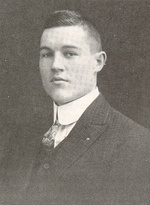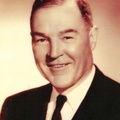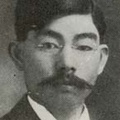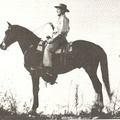Read Part 2 >>
In 1913, the year of graduation from law school for Miyasaki and Wright, the Alien Land Act was passed by the California legislature. In short, it provided that land in the state could be owned only by those who were eligible for citizenship. The important phrase, eligible for citizenship, was a part of the Naturalization Act which was passed by the first United States Congress in 1790. Citizenship was to be given only to those who were born in the United States, and, through naturalization, only to those who were free and white. Blacks, American Indians, all Asians, and many other nationalities were therefore disallowed. Under subsequent interpretations of the law through the years, the right to become a citizen was extended first to blacks with the passage of the 14th Amendment in 1868, and later to Filipino, Chinese, and all other peoples. Only the Japanese and Koreans, 123 years later, remained ineligible for citizenship.1
The 14th Amendment to the Constitution of the United States states that “no State shall make or enforce any law which shall abridge the privileges or immunities of citizens of the United States nor shall any State deprive any person of life, liberty or property, without due process of law nor deny to any person within its jurisdiction the equal protection of the laws.” Disregarding this amendment, California passed the Alien Land Law in 1913 declaring that Japanese nationals were forbidden to own land. This law was upheld many times in the courts, and it was not effectively challenged until Marion Wright took up the battle many years later.
Because of the friendships of law school days, Marion Wright became the trusted advocate of the small but growing Japanese community. This young lawyer never let his friends and clients down. In case after case he defended them personally, saved their property from confiscation by the State of California, represented them in civil suits and advised them on all matters for which they asked advice. California was a place where there was little opportunity for foreigners to learn the English language, as no adult classes existed for this purpose. Most of the legal business was done through interpreters. Patience was required by both the Americans and Japanese involved as the explanation of complicated concepts based on American law, an outgrowth of English common law, depended on words which were sometimes non-existent in the 20th-century Japanese vocabulary.
Aliens and Nisei (second generation Japanese) came to Wright from all walks of life and from many parts of California. He was attorney for farmers as individuals, and he represented their combined interests such as the Japanese Farm Bureau, the Flower Growers, and the Farmers Protective League. He also represented fishermen, doctors, merchants, and canneries. He was attorney for many years for the Japan America Society.
The first notable test of Wright’s skill and patience began in 1924. Five Japanese doctors applied to the Secretary of State of California for the issuance of Articles of Incorporation in order to lease land on which to build a hospital to serve the Japanese community in Los Angeles. In view of the fact that there was discrimination even in the medical field, the plan was to build a facility to serve the people who had no other means of health care and to provide a place for Japanese surgeons to operate.
The Secretary of State, Frank C. Jordan, refused to comply with the doctors’ request although hitherto Articles of Incorporation for business purposes had been granted on a fairly routine basis to Japanese applicants. The leasing of land to these people was also generally allowed as well, but on this particular request, the State refused the application.
The Superior Court of Los Angeles County held that the Articles of Incorporation should be granted, and the State of California appealed to the California Supreme Court in a case known as Jordan vs. Tashiro.2 The justices concurred: they held that the doctors should be allowed to incorporate and build. Again, the State Attorney General, Ulysses S. Webb, appealed and the case went to the United States Supreme Court.3
The main point at issue in this case was whether the leasing of land and the building of a health facility would be allowed under the Treaty of Commerce and Navigation of February 21, 1911 between the United States and Japan. This agreement listed the rights of citizens when they were living in the country of the other signator. In the United States Japanese aliens were granted full protection of the laws. They had the right to engage in trade, to lease and enjoy land, and had many other listed rights. However, the specific right to incorporate and lease land on which to build a hospital was not expressly listed. The State of California refused to comply with the request of the doctors and argued that a state had the power to grant or not to grant Articles of Incorporation and that this action was an attempt by individuals to force the state to do something that it chose not to do.
Wright’s position was that the State of California was bound to comply with the doctors’ request as the project fell within the jurisdiction of the Treaty of Commerce and Navigation which was the law of the land. The decision of the case in the California Supreme Court hinged on the interpretation of this international treaty signed fourteen years before during the presidency of William Howard Taft.
The United States Supreme Court agreed to hear the case, and Marion Wright achieved at the age of thirty-four the lifetime goal of most attorneys, an opportunity to present a case before the highest court of the land. This was an exciting time for a young lawyer from a small western city. In April 1928 he arranged to take with him on the long train trip back to Washington his wife and two daughters, eight and ten years of age.
The Supreme Court at that time was in a room of the Capitol Building. It had an atmosphere that inspired awe. The ushers in their white gloves enforced complete silence even before court convened. The formality and dignity of the proceedings were impressive.
William Howard Taft, Chief Justice at this time, was the only man in history ever to hold both the offices of President of the United States (1909–1913) and Chief Justice of the Supreme Court. Before Taft was president he had traveled extensively in Japan as Secretary of War under President Warren G. Harding. The Treaty of Commerce and Navigation of 1911, which was the basis of this case, was signed during Taft’s term in the Presidency. In Jordan vs. Tashiro, sixteen years after the treaty was signed, Chief Justice Taft was one of nine judges who interpreted a treaty which was signed during his administration as President and in the preparation of which he was personally involved.
The defendants in error, as the doctors were called, argued through Wright that this was the first instance in which Articles of Incorporation had been denied to Japanese; that their request created a situation which was definitely within the Treaty of Commerce and Navigation; that it was proper for the state to grant the Articles of Incorporation, and that the meaning of the treaty should be liberally interpreted. The two lawyers, State Attorney General Webb and Wright, were before the court but fifteen to twenty minutes. After some sharp questioning by the solemn justices Attorney General Webb was stopped by the court before he finished his argument. This was a sign that the appeal was dismissed and that the Supreme Court of the United States had decided in favor of Wright’s clients, the Japanese physicians. The official decision was announced about five months later.
There was great rejoicing among the Japanese. Their health care could now be improved. They could have a facility of which they would be proud. The hospital which opened at First and Fickett Street in Los Angeles was a two-story building with forty-two beds. At the opening ceremony on December 1, 1929, attended by leaders in the Japanese medical field, Prince Kayonomi of Japan was present. Marion Wright was an honored guest and the only non-Japanese person in attendance.4 The hospital served the community until 1984.5

The opening ceremony for the Japanese Hospital at First and Fickett streets, Los Angeles, December 1, 1929. Wright is seated in the center.
Notes:
1. Chuman, The Bamboo People, p. 65.
2. Jordan v. Tashiro 277 US 580, 48S.Ct.527 72 L.Ed.997 (granting certiorari in Tashiro v. Jordan 2010 Cal. 236 256 P 545) 1927.
3. Jordan v. Tashiro 278 US 123 1928.
4. An article in Kashu Mainichi written by Sei Fujii, December 10, 1929, describes Wright’s meeting with Prince and Princess Kayanomi. “Attorney J.M. Wright after an audience he had with Prince and Princess Kayanomi yesterday at the Japanese Hospital of Los Angeles, called me up and proudly stated as follows:
I met the Prince and Princess yesterday. The Prince shook hands with me. I was told that I was the only one who had the honor to shake hands with the Prince yesterday at the hospital. The sun room of the hospital was made the reception room. There were many beautiful flowers in the room. Two royal chairs were provided for the royal members. The Prince and Princess went through nearly every room of the hospital and they surely made the patients and everybody very happy. In the sun room, reception was held for a limited number of people. I had the honor to be one of them.
Dr. Amano, the president of the hospital corporation went in first and Dr. Tashiro followed him. Dr. Tashiro explained briefly in Japnese the history of the hospital. Then I was called in. I confess I did not know what to say and how to address the Prince and Princess. Heretofore I had heard other people say that when you address a Prince, you should start with ‘your royal highness’ and so forth.
I repeated this many times lest I should forget, before my turn came. Finally my name was called and I entered the reception room. I never anticipated that they would speak to me. All that I expected from them was just their nodding or some such form of greeting and I thought I should not talk to them unless they wanted me to.
I really thought that it may be that I must kneel down on the floor and respectfully salute them and I was prepared for this ceremony. To my big surprise, when I entered the room, the Prince and Princess arose from their chairs and the Prince with military steps came right up to me.
I did not know what to do. I was all upset and lost. I couldn’t say a word. Moreover, the Prince asked me a few questions about the legal aspects of the hospital case and I had the honor to explain to him briefly the points involved in the case.
It was certainly a big honor to me. I want all of my Japanese friends to know how deeply I appreciate the honor bestowed upon me. I will always consider it a privilege to serve my Japanese friends and be able to do favors for them in the future.”
* “J. Marion Wright: Los Angeles’ Patient Crusader, 1890–1970” by Janice Marion Wright La Moree was first published in Volume 62, no. 1 (Spring 1990) of the Southern California Quarterly, then reprinted separately in a limited edition that same year.
**All photographs are courtesy of the author.
© 1990 Janice Marion Wright La Moree






